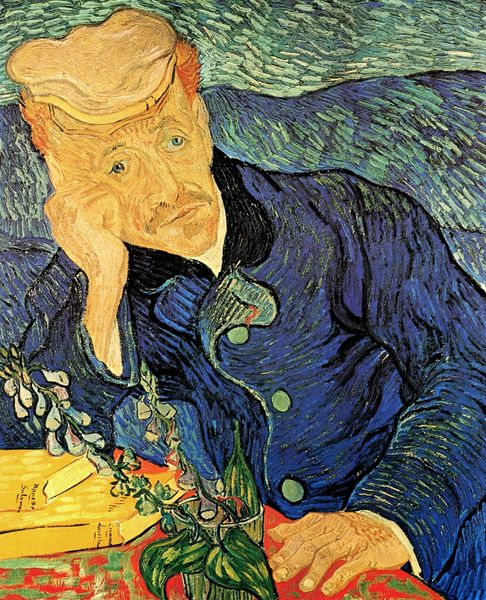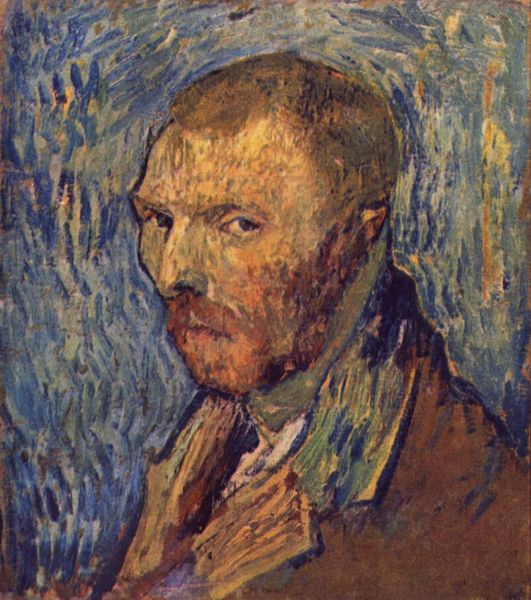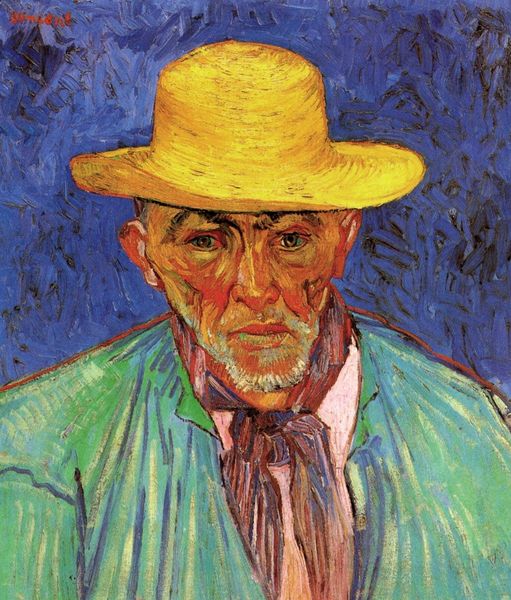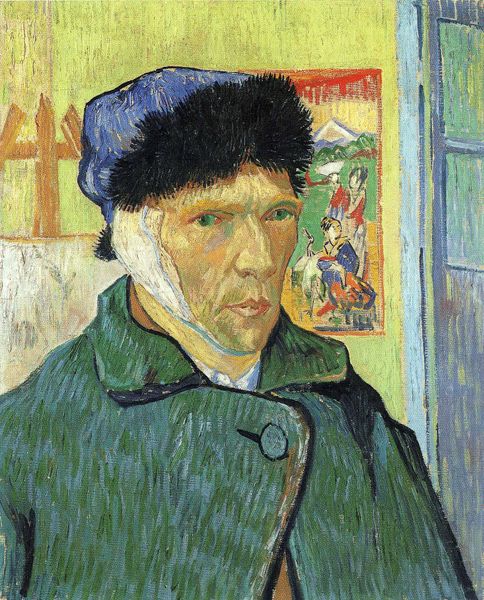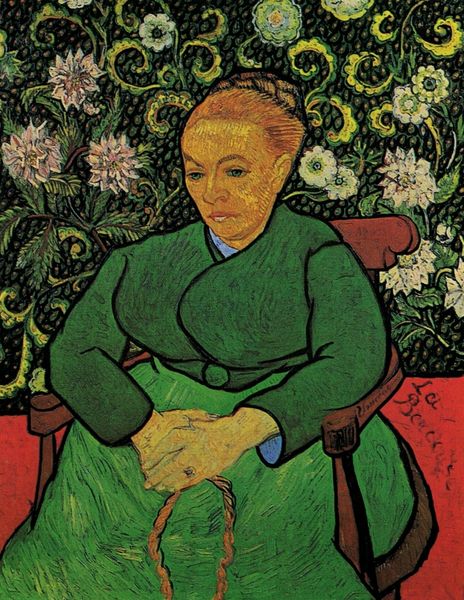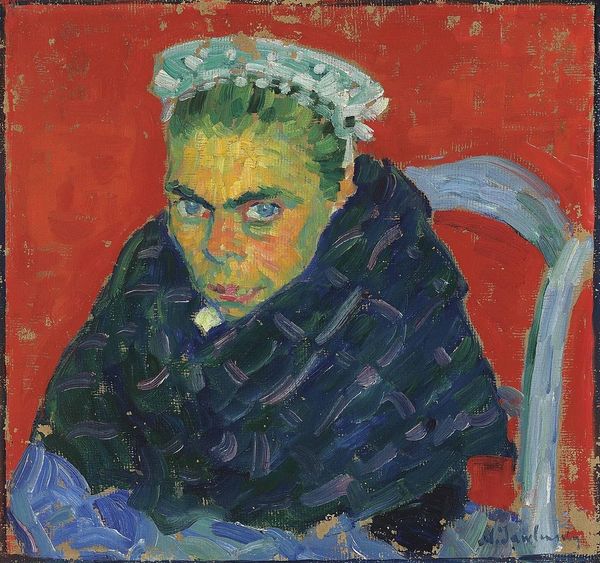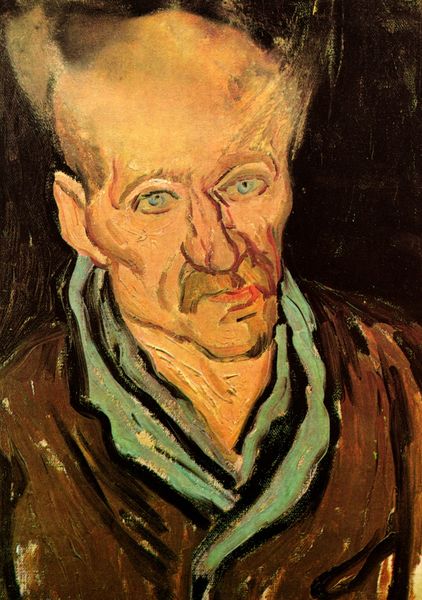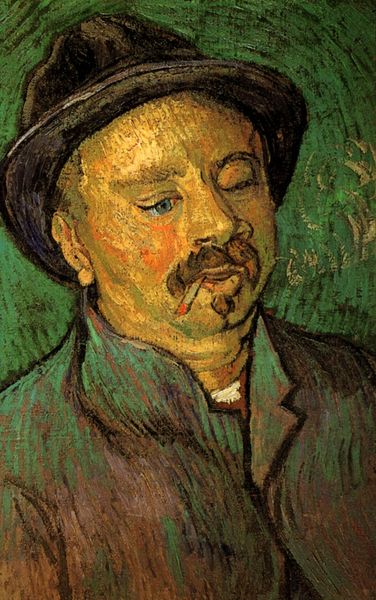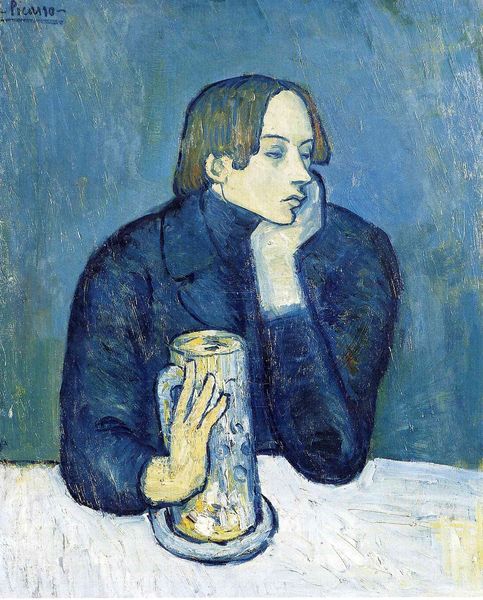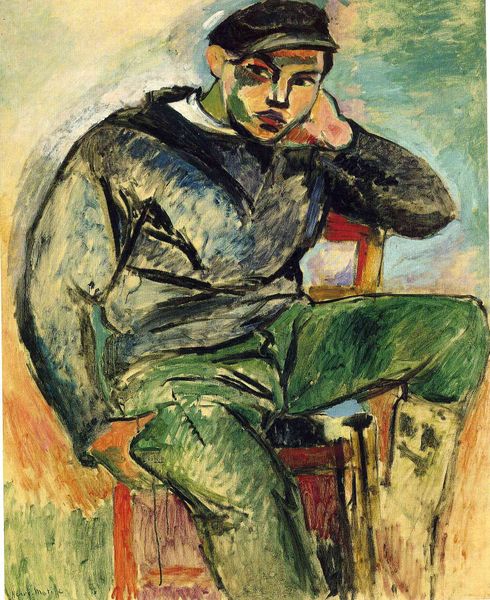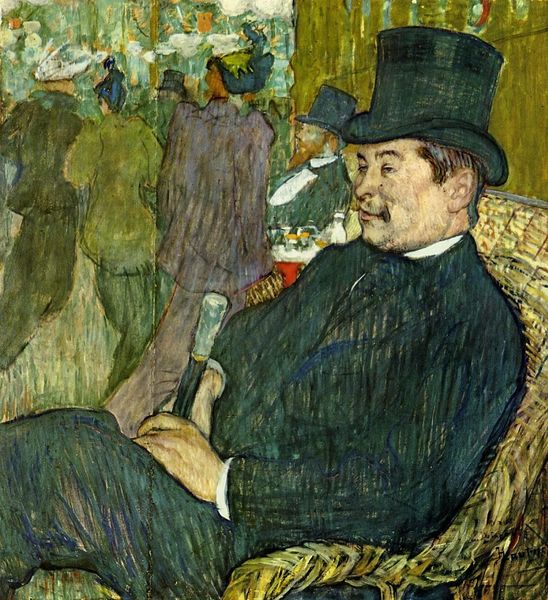
Dimensions: 57 x 68 cm
Copyright: Public domain
Curator: In front of us, we see Van Gogh's "Portrait of Doctor Gachet," a deeply affecting work executed in 1890, just months before the artist's death. It's a prime example of his Post-Impressionist style, heavy with impasto and vibrant color. Editor: My gut reaction? It’s heavy, somber, and a little…disquieting. That blue background, the downward gaze – it all conspires to create a mood of profound melancholy. The man looks burdened. Curator: Observe how Van Gogh uses color to amplify that mood. The melancholic blue indeed dominates the space, serving almost as a physical manifestation of the doctor’s internal state. Consider, also, how that blue interacts with the reddish-orange of the table, creating a dynamic, unsettling contrast. Editor: It's a striking clash, isn't it? Like a visual representation of the push and pull between vitality and despair. And look at those little sprigs of flowers…are they meant to offer some sort of solace? They almost seem to wilt under the intensity of the painting. Curator: One could argue that the flowers function symbolically, reflecting Gachet's profession as a doctor, one responsible for caring and mending the broken. Yet their wilted appearance might also symbolize a sense of hopelessness or failure, mirroring Van Gogh's own mental state at the time. Semiotically, their form hints at themes beyond just surface-level representation. Editor: Interesting! For me, they whisper about fragility…like life itself, easily bruised. And then there's Gachet's face – so expressive, the furrowed brow, those eyes filled with…resignation? You get the feeling Van Gogh is painting more than just a likeness. Curator: Precisely. The impasto technique itself is crucial here. The thick, swirling brushstrokes, visible and palpable, inject a visceral energy, an almost tangible sense of emotional turbulence. The surface becomes a record of the artist's own struggles. Editor: It's like he's scraping his feelings right onto the canvas. A raw and exposed process! The vulnerability is overwhelming. You see so many portraits that feel staged, mannered… but here, you get the impression Van Gogh's just stripped everything back to the bare essentials. It leaves you a little breathless. Curator: I find that our engagement here demonstrates how close formal engagement illuminates deeper, layered meaning in what appears, at first sight, as mere surface expression. Editor: True, sometimes it's by delving beneath what seems to be the obvious that unlocks a piece of yourself.
Comments
No comments
Be the first to comment and join the conversation on the ultimate creative platform.
